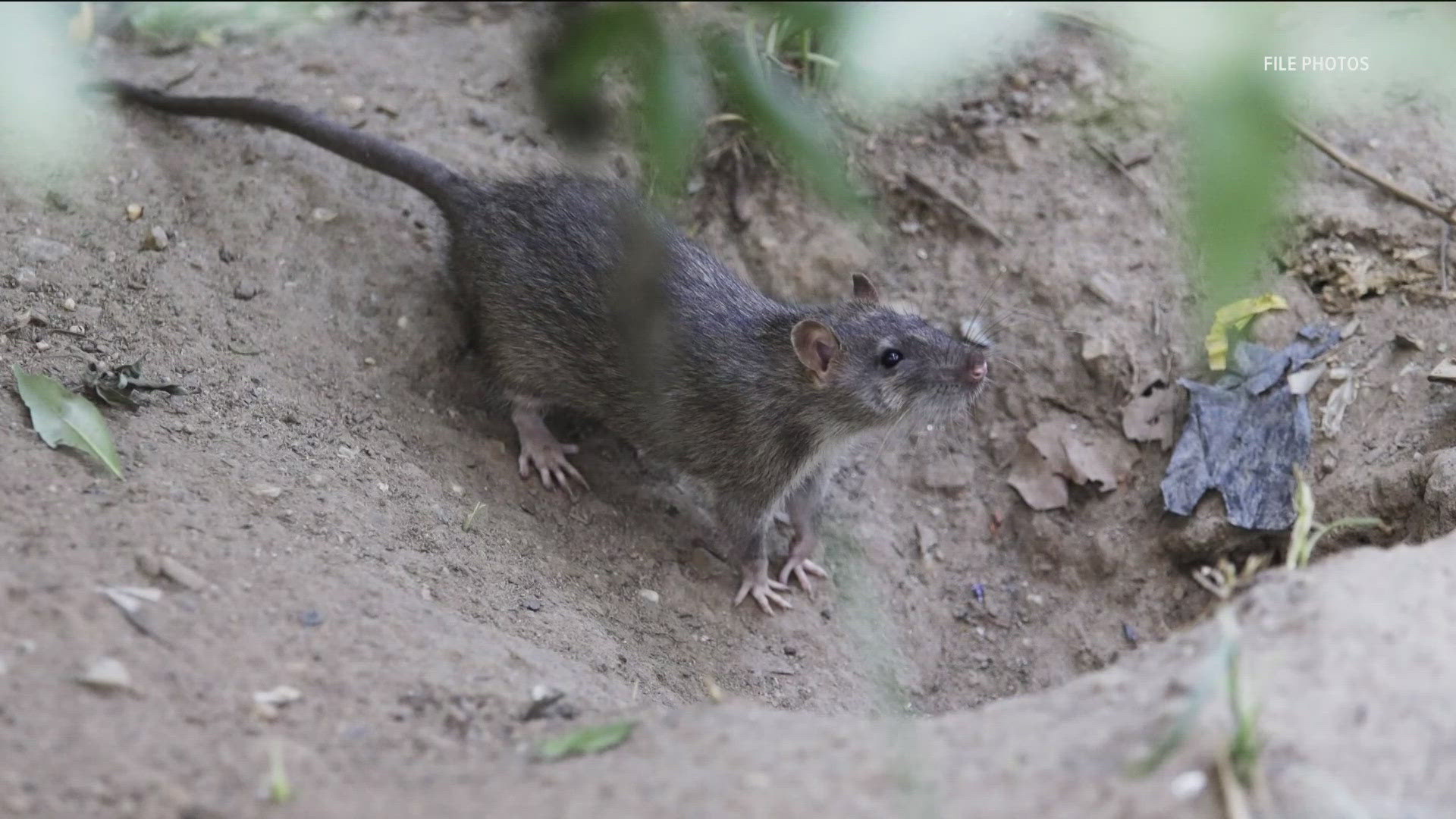MERIDIAN, Idaho — Talks of an invasive species have been circling around the Treasure Valley community.
Roof rats that were accidentally brought to the area are growing rather quickly in the City of Eagle neighborhoods.
One pest control company, Vertex Pest Control, spoke with KTVB about the increase in complaints and requests for help they’ve been receiving over the past two years.
For Vertex Pest Control, what started as a one-time residential rat sighting in Eagle in 2022, has now become a weekly complaint they respond to.
Bradley Christian, a lead technician at Vertex Pest Control, said the roof rat sightings have been steadily increasing over the years.
The rats are being reported in yards, gardens, and, unfortunately, inside homes.
Named after their habit of nesting in high-up locations, roof rats like to build nests in places like roofs or attics.
Christian added that they like to climb, which makes it easier for them to get into homes.
“They climb onto trees and branches, so they maybe get close to rooftops,” Christian told KTVB Friday. “They can get into the house easier that way. Because they're bigger, they can chew through probably thicker things like dog doors, the little flaps. They'll chew through that, and then they have their access in.”
Pack rats have been in the region for many years but aren’t as noticeable because they’re not nearly as destructive as roof rats and do not reproduce as quickly, Christian said.
Christian said roof rats have about five litters per year and can have up to eight babies per litter, meaning up to 40 rats can come from one rat each year.
He also said roof rats carry disease and are known to chew wires, scratch walls, and eat through plastic dog doors to get inside homes.
In a statement to KTVB, the City of Eagle said the following:
“This is a localized issue that needs to be taken care of on an individual basis by those affected. For those who notice any rats, please contact a local exterminator or reach out to the Idaho Humane Society to see if they would be a good candidate for their feral cat program.”
Vertex Pest Control recommends taking preventative actions for those who aren’t seeing rats.
This would primarily include eliminating outdoor food sources for the rats, which could attract them.
Christian said that things like bird seed, dog food, outdoor fruit and vegetable plants should be brought indoors if possible.
Idaho Fish & Game Regional Communication Manager Brian Pearson said that the area’s raptor population can be helpful with feeding on the rodents.
As for how they arrived, “a lot of times with these invasive species, it's somebody who's either traveling out of state or just moved from out of state, accidentally brings it,” Christian said. “We need the whole neighborhood to really do their part, to try to help eliminate the rats altogether. Which is really hard."
It’s not verified how the invasive species arrived in southwest Idaho, but it’s unlikely they’ll be leaving anytime soon if it is not reported and managed by residents.

